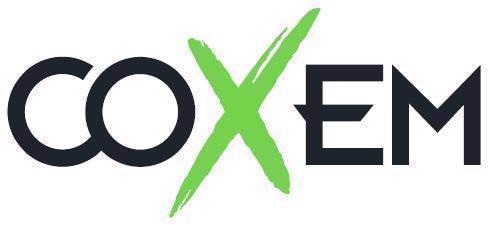In this article, AZoM speaks to Kim Tae-heon, CEO of Solge about the incorporation of COXEM's SELPA system.
Coxem has developed a new automated large area particle analyzer based on Scanning Electron Microscope (SEM) that can be employed in the analysis and classification of particles by size and element.
One of the companies that have made the switch to SELPA is Solge, a South Korean business that is using the device for lubricant analysis of substances like engine oil and for the examination of debris in oil. Solge’s CEO explains the benefits of SELPA.
Can you explain some of the work that Solge is engaged in? What aspects of this work require employing scanning electron microscopes?
Solge is the only commercial lab capable of analyzing fluid cleanliness in Korea. Customers request fluid cleanliness analysis for two purposes. The first is for component cleanliness management, and the other is for machine cleanliness. The analysis is necessary for monitoring the conditions.
SEM-EDS has many effective ways to achieve these two objectives.
In terms of component cleanliness management, it is possible to obtain the contamination source and more accurate size distribution information. In terms of machine condition diagnosis, the location of the failure (through Elemental Analysis) and the severity of the failure (through the size and shape of particles) can be evaluated.
Can you describe some of the equipment that you’ve used in the past to conduct this work?
We have used the Automated Microscope Diagnosis System and the Automatic Laser Particle Counter to diagnose the cleanliness of parts.
In addition, Rotating Disk Electrode (RDE) Spectroscopy and Automatic Laser Particle Counter have been used for machine condition diagnosis through particle analysis.
What issues arose with these devices or processes that made an automated large area particle analyzer desirable?
Existing SEM equipment was limited to diagnosing particles in a smaller, more specific area rather than a large area. To satisfy the international standards (VDA19 and ISO16232) for the cleanliness of parts, particle analysis on a large area should be possible.
Due to limitations, it was difficult to replace the optical microscope used in the existing part cleanliness field. However, the SELPA system helps to overcome this challenge.
Can you explain why Solge chose to switch to SELPA? How did the relationship with Coxem develop?
We visited RJL Micro & Analytic in Germany with the aim of introducing them to a new piece of component cleanliness diagnostic equipment, as well as a new optical scanner. But, to our surprise, we were instead introduced to Coxem.
COXEM successfully developed the world’s first large-area SELPA system, and we decided to introduce it to our work. We became one of COXEM’s customers and a Korean sales representative for COXEM’s component cleanliness applications.
Why was it the right time to do so, and were there any concerns with adapting the business for new processes?
We were initially fearful as the SELPA system was our first commercial purchase. However, we soon realized that this was not a concern.
How does using SELPA help with adhering to global cleanliness standards?
The SELPA system fully meets the VDA19 and ISO16232 standards and complies with existing component cleanliness standards.
How is the company currently employing the device?
We are a Korean partner of Wearcheck Group, a global alliance of fluid diagnostic services. We currently use the device in component cleanliness and machine condition diagnosis applications by commercializing it as a SELPA system.
Can you describe some of the new benefits the company has seen since switching to SELPA?
In the case of Automatic Laser Particle Counter, which is mainly used for diagnosing the cleanliness of parts, the range of particle detection is limited (4 microns to 70 microns), and air or moisture other than solid particles may disturb the measured value.
In the case of a microscope, there is no limitation, and large-area particle counting is possible, but there is a limitation in identifying the types of contamination in combination with EDS.
In the case of RDE Spectroscopy, which is mainly used for diagnosing the machine condition, the composition and amount of wear particles are measured, but information on the size of the particles is not provided.
However, in the case of the SELPA system, by combining SEM and EDS, information on the shape, size, number and composition of wear particles is provided, enabling effective machine condition diagnosis.
How is your team finding SELPA? Have they found the transition easy or have there been challenges that needed to be overcome?
As mentioned earlier, we were introduced to SELPA equipment from Germany, not from Korea.
In the case of cleanliness analysis of a large area with SELPA equipment, a validation and/or calibration system for the number and size of particles counted needs to be developed.
For example, it is necessary to provide a dedicated SRM for the SELPA system as we could potentially receive a qualification request for a SELPA system from a customer.
Was there anything about the use of the device or the device itself that came as a surprise to you?
Using the SELPA system, we were able to accurately consult with the customer what exactly is the cause of the customer’s poor cleanliness and what the cause of the fluid contamination of the equipment in operation was.
Does the consumer feel any of these benefits?
In fact, for the same reason as the above answer, customers are very satisfied with the SELPA systems diagnostic reports.
Can you explain what sets the SELPA (Scanning ELectron Microscope for Particle Analysis) apart from other SEMs (Scanning Electron Microscopes)?
As previously explained, the existing SEM is limited to the particle analysis of specific particles or specific areas, but the SELPA system is the only SEM equipment available in the field of component cleanliness as it can analyze particles collected over the entire patch area.
ISO16232 and VDA19 require size and number analysis of all particles collected in the membrane filter.
What areas or fields do you believe will benefit the most from SELPA?
It would be highly beneficial in machine condition diagnosis, parts cleanliness and air pollution source analysis, although this is not our area of expertise.
Would you recommend SELPA to others in your field? If you could tell other companies considering using SELPA one thing to influence their decision, what would that be?
As a Korean partner of Wearcheck Group, a global alliance of fluid diagnostic services, we would like to introduce SELPA to our alliance.
In current spectroscopy operations, this equipment will be used to analyze the type and amount of metal powder in lubricants, but it does not provide information on the particle size or help determine the severity of the wear. SELPA is a very good solution to overcome these limitations.
About Kim Tae-Heon
Tae-Heon is a graduate of Keimyung University (major in Chemical engineering) and the CEO of Solge Corporation. He is a Fairness Evaluation Committee member of the Korea Certification Institute for Machine Diagnostics and a professional instructor in the mechanical condition diagnosis course at the Korea Certification Institute for Machine Diagnostics. As part of this role, he provides the lubrication part of the training institute of the Korea Gas Technology Corporation and Korea Western Power Co., Ltd.

This information has been sourced, reviewed and adapted from materials provided by COXEM Co. Ltd..
For more information on this source, please visit COXEM Co. Ltd..
Disclaimer: The views expressed here are those of the interviewee and do not necessarily represent the views of AZoM.com Limited (T/A) AZoNetwork, the owner and operator of this website. This disclaimer forms part of the Terms and Conditions of use of this website.